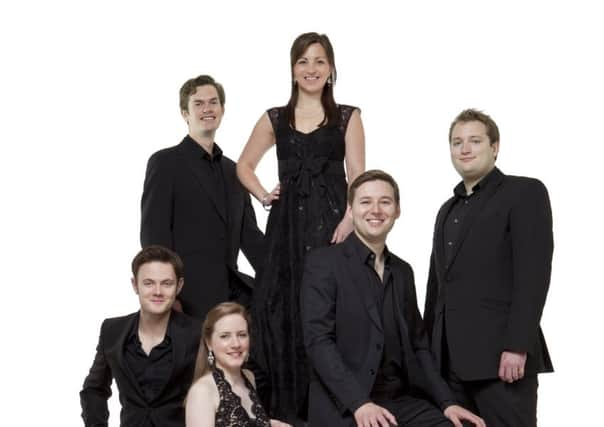The Marian Consort, bringing new voices to old songs


For vocal ensembles specialising in early music, competition is tough. There has to be a unique selling point. Often the shining charisma of the front men, such as Harry Christophers of The Sixteen or Sir John Eliot Gardiner of the Monteverdi Singers, sets them apart. But in cases like the Marian Consort, one of the youngest, freshest groups to join this rich seam of musical growth, it’s more about personalised delivery and the exploration and restoration of lost music, as well as a freedom to expand their repertoire beyond Renaissance boundaries.
Tonight, the Marian Consort – led by Edinburgh-born singer and Oxford academic Rory McCleery – is in Edinburgh, performing a Christmas programme in Canongate Kirk. The music centres on the story of the Shepherds, with masses and motets by such European Renaissance luminaries as Morales and Victoria. Besides the intelligence and persuasiveness of the singing, these glistening, ultra-clean performances have brought an unfamiliar name to the fore, that of the 16th-century Jean Mouton. He’s the subject of a doctoral thesis McCleery is currently working on at Oxford, and Mouton, he reckons, was a musical force to be reckoned with.
Advertisement
Hide Ad“His music was sung regularly at the Sistine Chapel in Rome, and one motet in particular – Quaeramus cum Pastoribus – remained in the repertoire there for 100 years, which is virtually 70 years longer than most other pieces,” says McCleery. “We know this because it was copied out afresh 100 years after the original copy was made, and was clearly done so for performance, as there are markings on it for the singers. Sources of this extraordinary motet have also been found as far afield as Aberdeen and Guatemala.”
Part of the appeal of the Marian Consort’s singing style is the super clarity that comes from having only one voice to a part, all of which took root from the group’s accidental beginnings in Oxford. “I had first encountered choral music as a chorister at St Mary’s Episcopal Cathedral in Edinburgh, but only began to appreciate the breadth of it when doing my music degree,” McCleery recalls. “I got together at university with a group of friends, all of whom had done a lot of choral singing. But rather than the large choirs we had been used to, I thought it would be fun if each part was to be sung by a single voice, like chamber music. We put on a concert on the strength of that, but realised we needed a name for the posters. ‘Marian’ was a desperate last-minute decision, though it’s become more appropriate the longer we’ve lived with it, given how iconic a figure Mary was within the music of the Catholic Church, the Protestant Reformation and the Counter-Reformation.” The group’s latest CD, Loquebantur, on Delphian, is a collaboration with the Rose Consort of Viols, exploring the 16th-century content of the Baldwin Partbooks housed in Christ Church Oxford.
“Next year is a bumper year,” says McCleery. “We’re recording Gesualdo motets which is linked to a hybrid concert play called Breaking the Rules, which we’ll tour the UK with, including a Scottish performance at next year’s Lammermuir Festival.”
There’s also a planned collaboration with the Berkeley Ensemble to perform Sir Lennox Berkeley’s 1947 Stabat Mater. It might seem a world away from the Consort’s home ground of the Renaissance, but it’s still all about Mary.
• The Marian Ensemble, Canongate Kirk, Edinburgh, tonight, www.gcs.org.uk